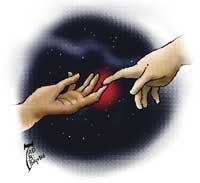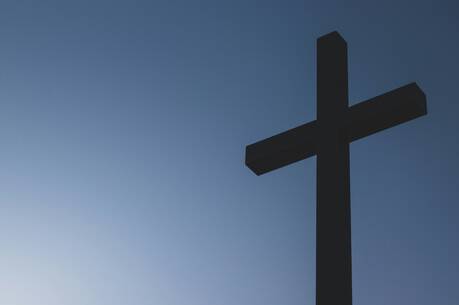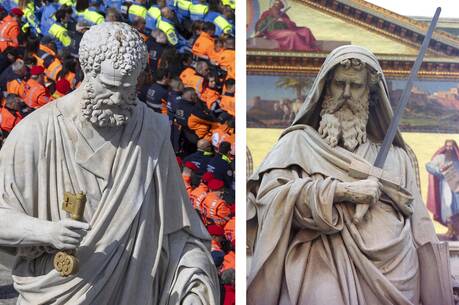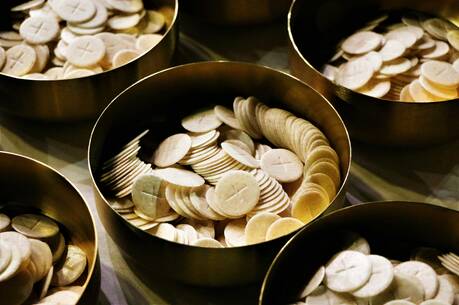Blood Bond
As youngsters, we had ways of sealing the bond of friendship with our best friends. We girls would exchange friendship rings, pledging our undying loyalty to one another. Our brothers would make a small cut on their finger and then mingle their blood with their buddy’s to signify the unbreakable bond between them as “blood brothers.” Today’s readings evoke this symbol of blood bonds that can never be broken.
In the first reading, Moses sprinkles half the blood of a sacrificed animal on the altar and the other half on the people. The blood signifies the life force that seals the commitment between the Holy One and Israel. Not only are God and the people bound together irrevocably, but the people themselves are united to one another. The twelve pillars erected at the foot of the mountain represent the whole of the people. They acclaim with one voice their loyalty to all the words and ordinances of God.
In the same way Jesus’ blood, shed for all, reaffirms God’s unbreakable bond with us. What Jesus says and does at the Last Supper is the culmination of an entire lifelong pouring-out of himself in love. The words and gestures echo God’s life-sustaining self-gift to Israel in the wilderness, symbolized in manna (Ex 16:12-35), and Jesus’ feeding of the hungry multitudes during his Galilean ministry (Mk 6:30-44; 8:1-9). These continual manifestations of God’s commitment to us reach their climax in Jesus’ gift of self. In Mark’s Gospel, the Last Supper is a Passover meal, recalling how the blood of lambs smeared on the doorposts kept the fleeing Israelites safe from the destroyer, and how the flesh of the lamb was consumed in haste for the journey to freedom.
So Jesus’ flesh and blood sustains, protects and frees us as a people who then embody for others his unbreakable commitment of love. His blood seals this covenant for all people. Four times in describing the preparation for the meal Mark uses the word math‘tai, “disciples,” signifying all the women and men who have followed Jesus and who have ministered with him. In the words over the cup, Jesus says his blood “will be shed for many.” This reflects a Hebrew idiom, where the contrast is between “one” and “the many.” “Many” does not mean that some are left out; instead it signifies the totality.
This blood bond is already a reality for us, yet it awaits perfect fulfillment, as Jesus’ final words in today’s Gospel reading indicate. In our eucharistic gatherings we make present again Jesus’ gift of self while we also celebrate a foretaste of the eternal feasting, where we will experience perfect oneness with the Holy One and with one another.
This article also appeared in print, under the headline “Blood Bond,” in the June 8, 2009, issue.








